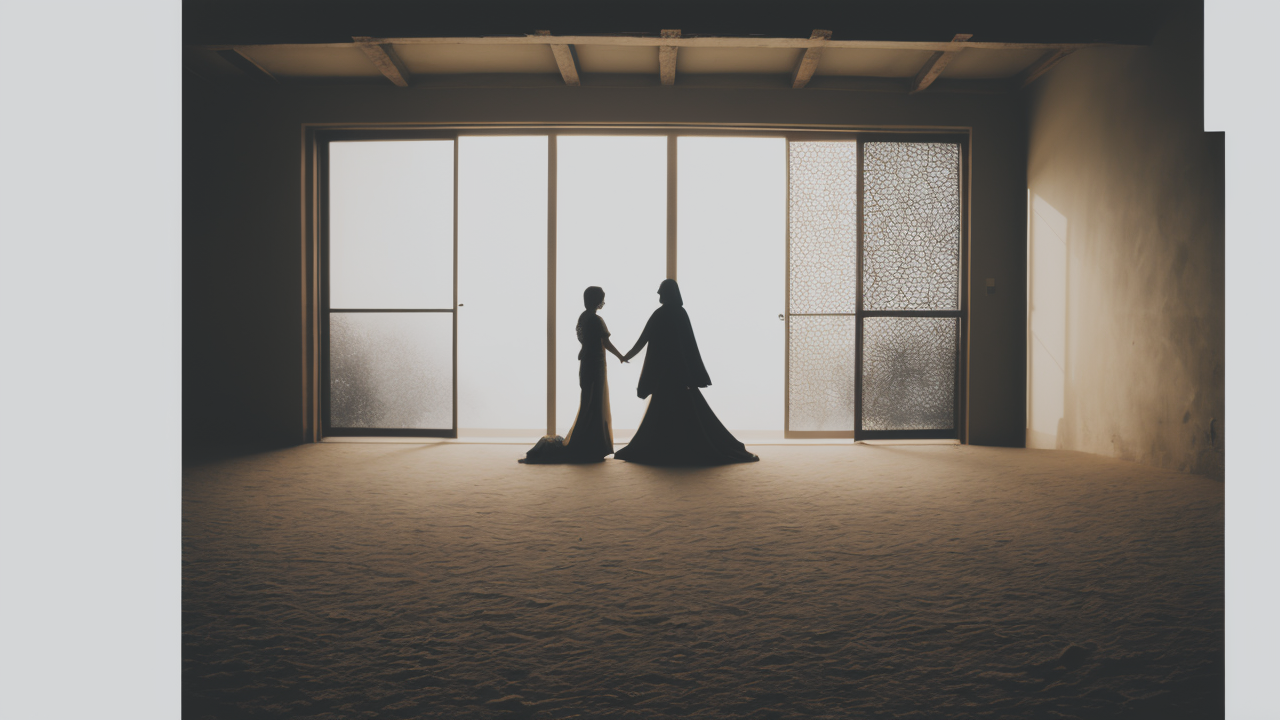
Mastering the Canvas: Expert Guide to Incorporating Modern Contemporary Art in Your Living Space
The Artistic Journey: From Nawab Mansions to American Walls
Historical Significance of Nawabi Minimalism
Nawabi minimalism emerged in 18th century India. It was born in the courts of Nawabs, Muslim rulers of that era. This art style is known for its elegance and simplicity. It uses clean lines, subtle colors, and geometric patterns. These elements create a sense of calm and order.

The style reflects Islamic art traditions. It avoids depicting human figures. Instead, it focuses on nature and abstract forms. Nawabi art values balance and harmony. It aims to create peaceful, refined spaces. Over time, it became a symbol of sophisticated taste.
Nawabi minimalism influenced more than just paintings. It shaped architecture and interior design too. The style spread beyond royal palaces. It became part of India's broader cultural heritage. Today, it continues to inspire artists and designers worldwide.
The Transition of Nawabi Art in the United States
Nawabi art made its way to the US through various channels. Indian immigrants brought their cultural heritage. Art collectors discovered its unique beauty. Museums began showcasing Nawabi-inspired pieces. This sparked interest among American art enthusiasts.
At first, many found the style unfamiliar. But its elegance and simplicity slowly gained admirers. American artists began exploring Nawabi techniques. They mixed them with Western art forms. This fusion created exciting new styles. It bridged cultural gaps through art.
Today, Nawabi-inspired art is growing in popularity in the US. It fits well with modern minimalist trends. Many see it as a fresh take on abstract art. Interior designers use it to add exotic touches to spaces. The journey of Nawabi art shows how cultures can blend through creativity.
The Intersection of Nawabi Minimalism and Modern Decor
The Role of Nawabi Art in Contemporary Interior Design
Nawabi minimalism is finding a place in modern US homes. Its clean lines work well with contemporary decor. The style adds elegance without being overwhelming. Designers appreciate its versatility. It fits in both traditional and modern settings.

Large Nawabi-inspired pieces often serve as focal points. They create visual interest in simple rooms. Smaller works add subtle cultural accents. The muted colors blend well with various color schemes. This makes it easy to incorporate into existing decor.
Many homeowners like the calming effect of Nawabi art. Its geometric patterns create a sense of order. This aligns with trends towards mindful living spaces. The style's focus on balance helps create harmonious interiors. It offers a unique way to add character to a room.
The Influence of Nawabi Style on American Artists
American artists are finding inspiration in Nawabi minimalism. They're drawn to its elegant simplicity. Some create direct interpretations of traditional designs. Others blend Nawabi elements with Western styles. This fusion is leading to innovative new works.
The geometric patterns appeal to many modern artists. They see links to abstract expressionism. Some explore traditional materials and techniques. Others apply Nawabi principles to digital art. This cultural exchange is enriching the US art scene.
Artists are learning from each other's traditions. This cross-pollination is exciting for contemporary wall art. It's creating new dialogues about art and culture. The result is a fresh, diverse array of artworks. These pieces reflect both heritage and innovation.
Strategies for Collectors and Buyers in the Nawabi Minimalism Market
Identifying Authentic Nawabi Pieces
For collectors, authenticity is key when buying Nawabi-inspired art. Look for pieces with clear history. Good galleries provide documentation. This traces the artwork's origin. Pay attention to materials and techniques used.

Traditional Nawabi art often uses natural pigments. It may have gold leaf accents. The craftsmanship should be high quality. Geometric patterns should be precise. If buying old pieces, check for appropriate signs of age.
Learn about different Nawabi styles and motifs. This helps in spotting genuine works. Ask experts when unsure. They can offer valuable insights. Remember, even new interpretations should show understanding of Nawabi principles.
The Future of Nawabi Minimalism in the US Market
The future looks bright for Nawabi minimalism in the US. Its appeal is growing among art lovers. The style fits well with current design trends. Experts predict more demand for both old and new pieces. This could lead to exciting market developments.
New artists are likely to experiment with the style. This may create unique sub-genres. The mix of Nawabi and American art could attract more fans. It offers fresh perspectives in the art world. This evolution could expand the market for Nawabi-inspired works.
Investors see potential in this growing field. As interest grows, prices for good pieces may rise. But the market is still developing. This offers chances for new collectors to join. Education will be key to growing appreciation for this art form.


